How Halifax is dealing with climate change — and what other action is needed
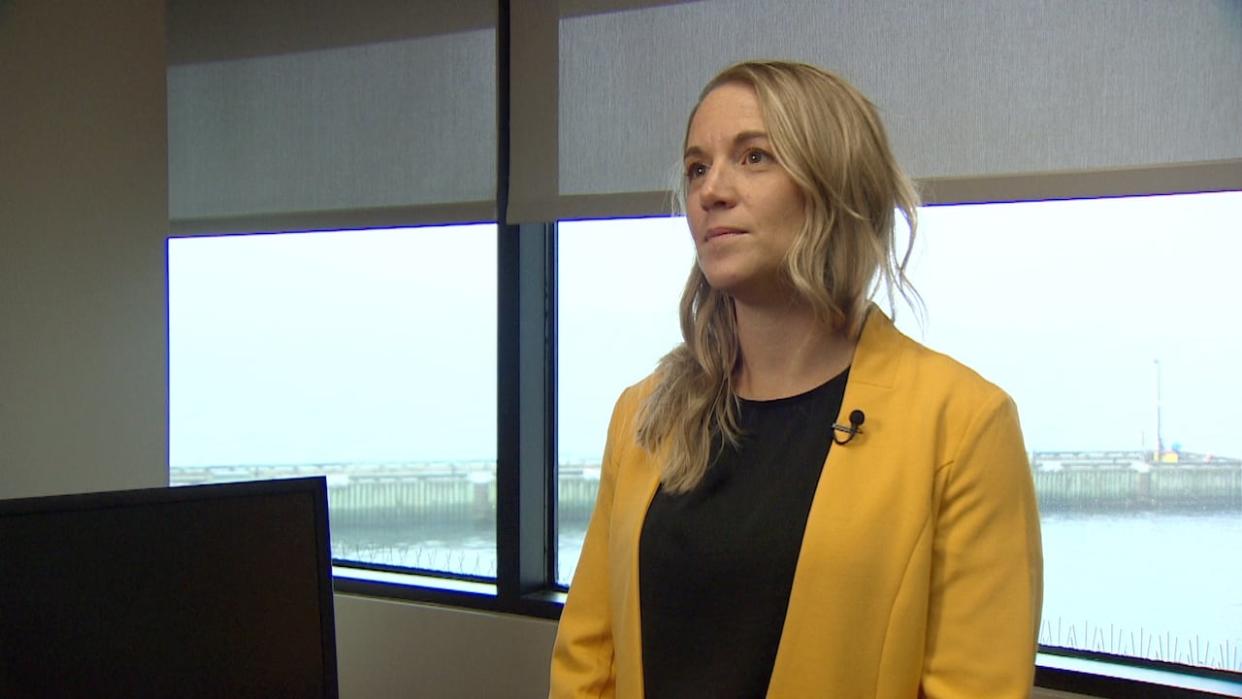
After a year where major storms, wildfire and flooding battered the Halifax area, many residents are wondering how the city is adapting to a world of extreme weather.
As director of environment and climate change for the Halifax Regional Municipality, Shannon Miedema has been hearing a "building anxiety" since post-tropical storm Fiona last fall, the Upper Tantallon wildfire in May, and July's historic rainfall that caused dramatic flooding in Halifax and elsewhere in the province.
"Like, what is actually happening in Nova Scotia? It's really kind of raising the level of awareness, and kind of acceptance, that climate change is here now and it's real," Miedema said.
Halifax is now three years into its climate change plan, HaliFACT, which the city calls "one of the most ambitious climate action movements in Canada," and aims to have a net-zero economy by 2050. It's funded by a climate action tax on residents' property tax bills, which amounted to about $20 million in this years' budget.

Fires outside Halifax destroyed hundreds of homes. It maybe a warning of what's to come as extreme weather from climate change dries out forests and makes wildfire more common in Atlantic Canada. (Darren Calabrese/The Canadian Press)
Miedema and her team of about 30 staff are working on the plan's 46 actions, which include installing electric-vehicle chargers, electrifying the bus fleet, integrating climate change into municipal decision-making, tree-planting and assessing coastal risks.
An upcoming project on Shore Road in Eastern Passage aims to create a long-term solution to a stretch of coastal roadway that regularly washes out, as it did most recently during post-tropical storm Lee.
A new slope of natural plants and cobblestones will be created on the shoreline, with a breakwater, new raised trail and trees. The city will chip in $2 million with $3 million coming from the federal funds.
"This type of fund gives us the opportunity to try something new," Miedema said, adding that community consultation will start soon.
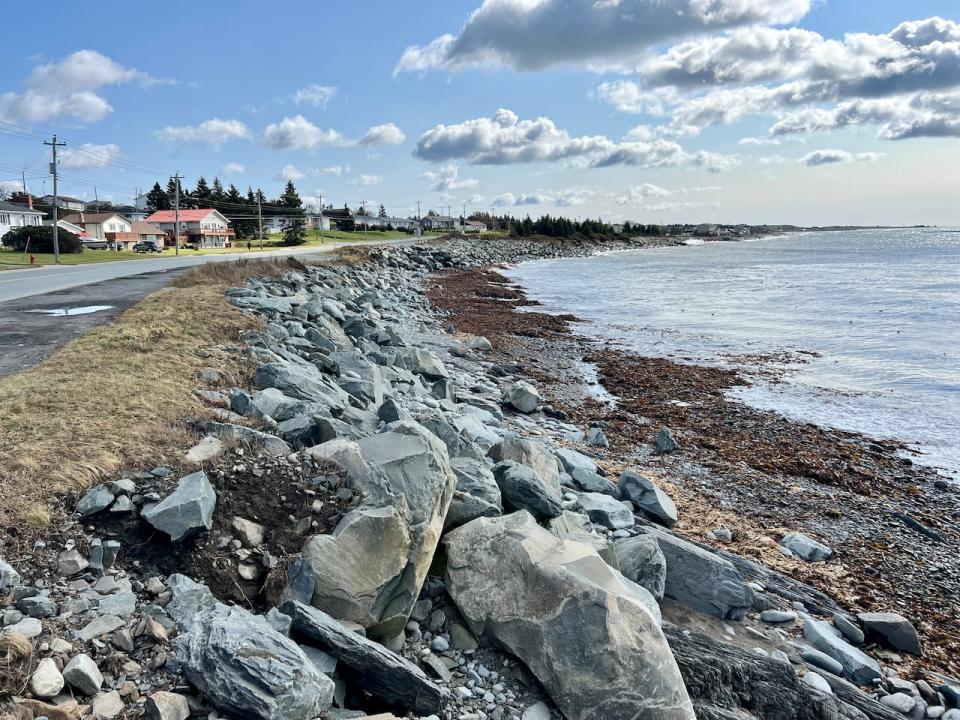
A stretch of Shore Road in Eastern Passage will be the site of a "green shores" project from Halifax, using natural materials to reduce wave strength and flooding across the road. (Paul Palmeter/CBC)
Halifax hopes to begin the project in 2024.
Miedema said she'd like to see the city do more of this "building back, better" and use their HaliFACT money to replace aging bridges with ones that can withstand large amounts of rushing water, for instance
The climate team is talking with public works staff about these changes, which could include permeable pavement in often-flooded parking lots, but Miedema said no projects have moved ahead yet.
Staff are also re-imagining the Solar City program, Miedema said — which now offers Halifax property owners financing for solar energy — into a larger plan for all buildings in the municipality including private homes.
The program, which Miedema hopes will launch "soon," would provide a full suite of options for those who want to make changes to their property — whether that be solar panels, or preparing for the next hurricane, flood or extreme heat event.
Buildings responsible for most Halifax emissions
Retrofits are key because HaliFACT found 70 per cent of Halifax's total greenhouse gas emissions are created by fuel and electricity consumption from residential, commercial and industrial buildings.
That's also why it's vital the province moves ahead more quickly with renewable energy projects because the grid "needs to be greener," Miedema said.
Miedema said their team has just finished over a year of work with a consulting firm on climate risks to the city's critical infrastructure including roads, bridges, telecommunications, rail and the port. The report will help guide investments into protecting those assets and will eventually come before regional council.
"It's really detailed, it's really scientific. We're really excited," Miedema said. "We're getting detailed flood hazard mapping for the entire municipality ... so rain flooding and coastal flooding."
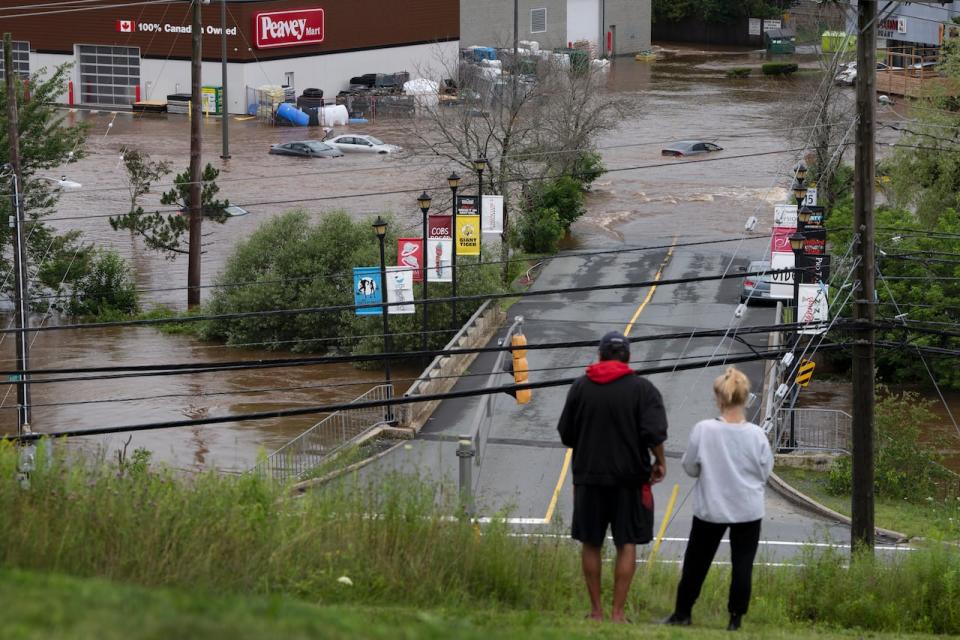
People stand on a hill surveying cars abandoned in floodwater in the parking lot of the Bedford Place Mall following torrential rain in Halifax on July 22. (Darren Calabrese/The Canadian Press)
This project pairs well with an update on hazard risks and vulnerabilities from the city's emergency management team that helps with emergency planning, including evacuation routes, for all types of disasters in the municipality, Miedema said.
Public consultations on the assessment are running in various communities until early November, and there's also an online survey.
The climate change team also weighed in on the draft regional plan, which is in the midst of public consultation. The plan sets out regionwide policies outlining where, when, and how future growth and development should take place.
The plan says it's Halifax's intent to "discourage the development of wetlands" and offer incentives for their protection instead, as well as increasing buffer zones around rivers, streams and lakes from 20 to 30 metres.
Eric Rapaport, an associate professor of planning with Dalhousie University, said he's happy to see that buffer expanded — but Halifax should do the same with coastline. The draft regional plan says no main buildings should be allowed less than 3.2 metres above mean sea level, but Rapaport said that should be at least five metres.
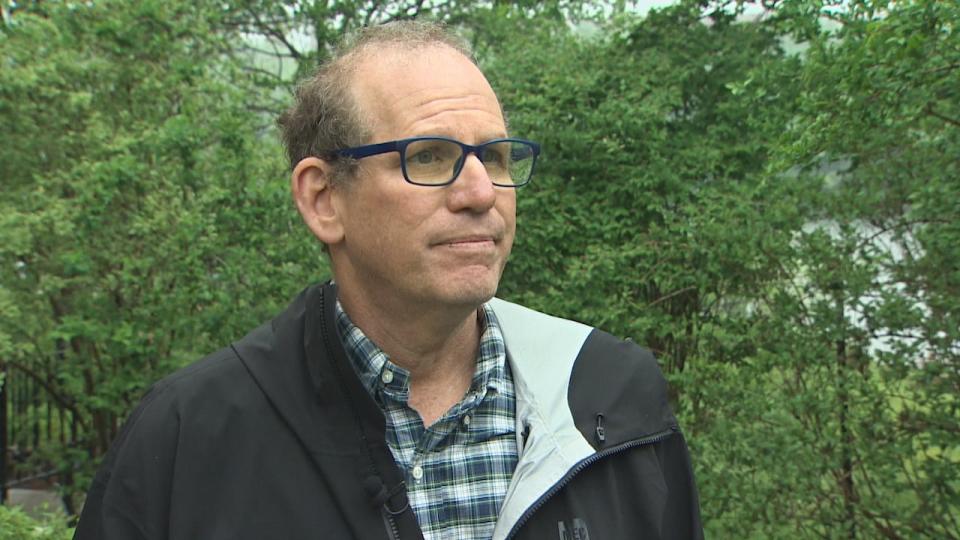
Eric Rapaport is an associate professor with Dalhousie University's School of Planning. (CBC)
Halifax could also be taking a "far more aggressive stance" on flood prevention by following the concept of a sponge city, Rapaport said. That method suggests using green areas like gardens or roofs to soak up storm water that is released slowly, which in Halifax could include boulevards like University Avenue, or both Halifax and Dartmouth Commons.
Rapaport said projects like rain parks are easy and relatively cheap to complete and are gaining popularity in Europe and the U.S.
"So, there's a lot more we could be doing."
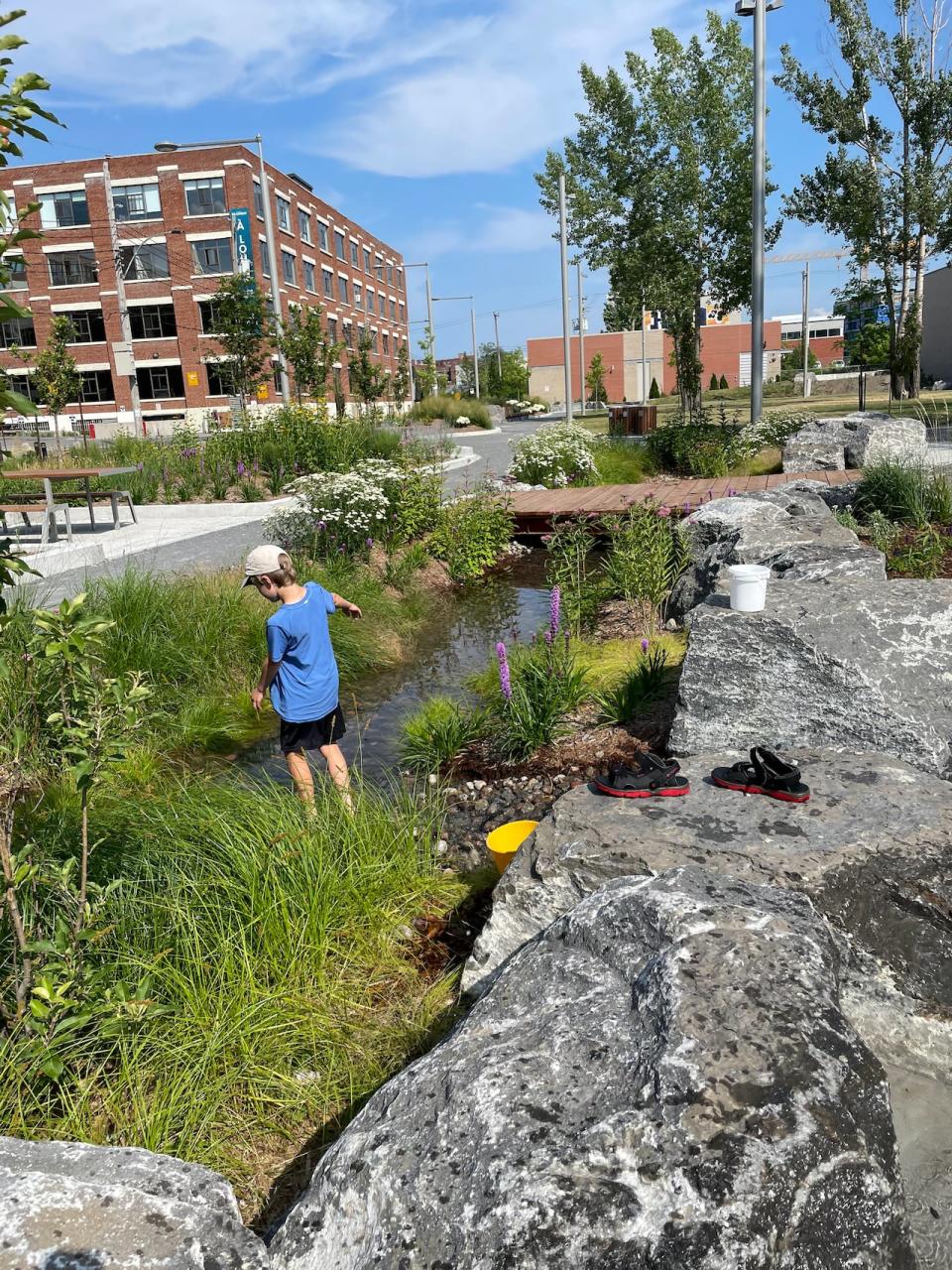
A creek forms in Montreal's Dickie Moore Park when the splash pad is on and the water flows into a bed of rocks next to it. The park is one of many the city has already created or revamped to absorb the increasing amount of rainwater due to climate change. (Kim McNairn/CBC)
It's also important to speed up current projects that could get people out of their cars and have a major impact on carbon emissions, Rapaport said, like a ferry between Bedford and Halifax, and a network of protected bike lanes. He also said making Halifax Transit free would benefit everyone, making roads less congested for people who have to drive.
Councillors are ultimately the ones who set priorities for the city, and Rapaport said it's a "difficult" job finding the money for ambitious climate projects alongside pressures like the homelessness crisis.
"You have to first think about making sure everyone has shelter and food," Rapaport said. "Then we should take a really close look at 'what's going to give us the most bang for our buck in terms of decarbonization.'"
Overall, Rapaport said Halifax is being proactive and gives the city "a lot of kudos" for its various projects, including potentially setting up a district energy system for the new Cogswell area with heat from the neighbouring wastewater plant.
A survey on climate change distributed through Halifax libraries showed that most respondents felt fear and a sense they had no power, Miedema said. She believes a way to combat that is to showcase what the city is working on, and encouraging people to take their own actions.
"We haven't yet ran out of time and we still have hope," Miedema said.
MORE TOP STORIES


